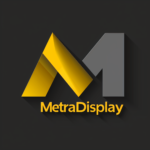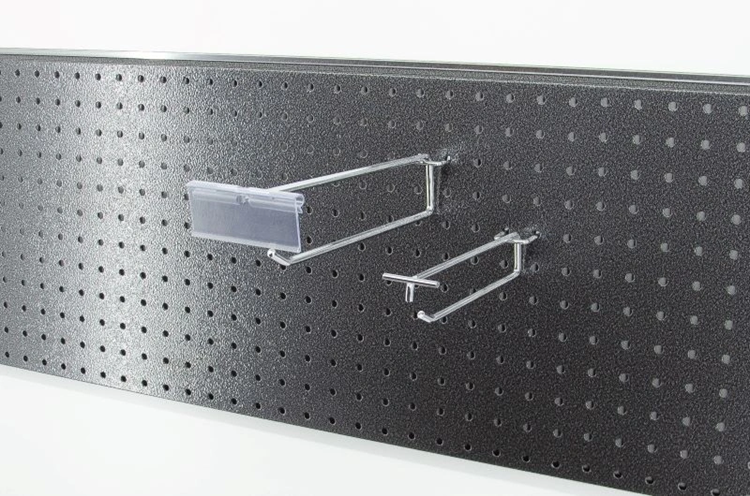
Display hooks serve as versatile retail fixtures that reshape your store’s organization and customer experience. These metal and plastic systems maximize space efficiency and boost product visibility in retail environments. Store display hooks remain crucial merchandising tools for supermarkets, drug stores, convenience stores, and warehouse clubs.
The retail display hooks offer valuable security benefits. Businesses now rely on specialized security hooks, also known as anti-theft hooks, that let products hang securely while preventing theft. Your store layout becomes more flexible as these shop display hooks mount easily on pegboard, gridwall, and slatwall panels. This piece shows you how display hooks for walls and other surfaces can optimize your retail efficiency, boost customer involvement, and improve your profits.
Choosing the Right Hook Type for Your Store Layout
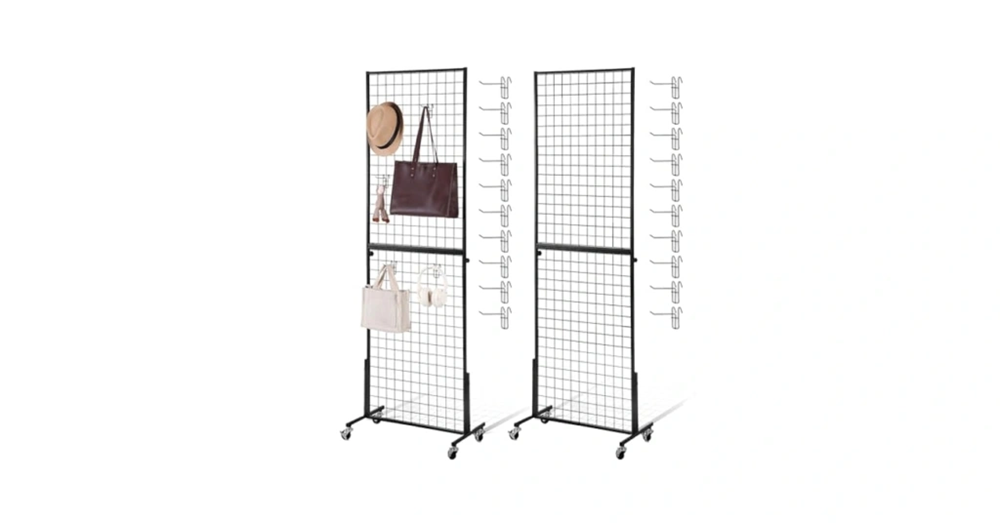
Your retail space needs the right display hooks that match your store layout and merchandise type. A good hook system can boost product visibility and increase sales up to 20% by displaying items properly.
Wall-mounted vs freestanding displays with hooks
Wall-mounted displays make the most of vertical space and free up valuable floor area for customers to move around. These fixtures create a clean, tidy look when attached directly to walls. Freestanding displays give you more flexibility. You can set up temporary promotional areas or switch your store layout without making structural changes.
Gridwall systems work great for pop-up shops and trade shows because they’re light and easy to move. Permanent retail stores usually do better with wall-mounted slatwall panels. These panels spread weight evenly across merchandise and look sleek and modern.
When to use pegboard, slatwall, or gridwall systems
Each display system has its strengths based on what your retail store needs:
- Pegboard: Perfect for affordable and DIY installation. These flat boards have evenly spaced holes that fit various hooks. They work best for lightweight items but can’t hold much weight.
- Slatwall: Gives an upscale, polished look with horizontal grooves for specialized hooks. It handles more weight and works well with items of any size.
- Gridwall: Creates an industrial, distinct look using wire grids. You can mount these on walls or use them as standalone units, which makes them great for changing store layouts.
Matching hook types to product categories
The right hook keeps your merchandise secure and well-presented:
- Single prong hooks: Work best for lightweight items like packaged snacks or accessories.
- Double prong hooks: Give extra support to heavier products like tools or kitchen utensils.
- Loop hooks: Perfect for items with special packaging that need unique hanging solutions.
- Locking hooks: Help protect high-value products from theft.
- Heavy-duty hooks: Support bulky merchandise that needs extra strength.
Research shows that 70% of shoppers dislike disorganized inventory, and more than half leave without buying anything. The right hook system does more than just organize—it creates a shopping experience that drives sales.
Ergonomic Considerations in Hook Placement and Sizing
The way stores place their display hooks makes a big difference in how customers experience shopping and reach products. Good placement creates an easy-to-use shopping space where customers find and grab products without any hassle.
Ideal hook height for different customer demographics
Smart retail displays take into account the people who shop for products. The “buy level” sits a bit lower than eye level – right where customers can grab products easily. Adult shoppers find it most comfortable to reach products between their waist and eyes (about 1.2-1.5 meters from the floor). This height lets people interact with products comfortably.
Women shop best with displays around 5 feet (152 cm) tall. Men need to display a bit higher at 5 feet 5 inches (165 cm). Kids’ products should sit at 4 feet (122 cm) high. Older shoppers do better with products at medium heights (0.9-1.2 meters). This setup helps them avoid any physical strain.
Hook angle and curvature for easy grab-and-go
The shape of display hooks plays a key role in how customers handle products. Hooks that angle forward show products better and make them easier to grab. These hooks work best when they have:
- A smooth surface that holds products well
- A gentle curve that faces products toward shoppers
- A hook tip that balances between grip and ease of use
Avoiding overcrowding and product overlap
Display hooks for wall mounting that have too many items look messy and frustrate customers. Research shows 70% of shoppers hate disorganized inventory. Small items need 3-4 inches between hooks, while bigger products need 5-6 inches of space.
Product size matters, including packaging, when you space out hooks. This keeps items from bumping into each other and helps every product stand out. Well-spaced displays make products easy to see and help staff restock quickly. This creates a smoother retail operation.
Customizing Display Hooks for Brand and Functionality
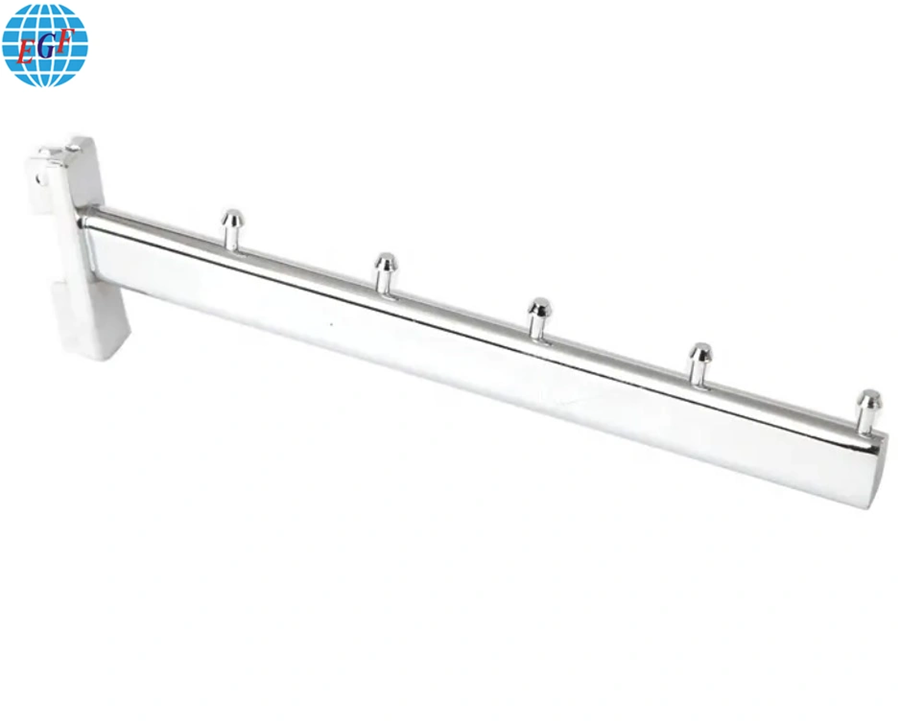
Display hooks become powerful branding tools when you add your personal touch. A thoughtful custom approach turns these practical items into an extension of your store’s look and feel.
Color and finish options that match your brand
Custom display hooks subtly boost your brand presence. Powder coating comes in many colors that match your brand guidelines perfectly. Your store creates a unified look when materials and finishes match your brand identity. Suppliers go beyond standard options and provide custom colors through dye-to-match services that make every fixture part of your visual story.
Label holders and price tags that work
Built-in label holders make things work better for you and your customers. Today’s store display hooks come with plastic tag holders adjusted for 1¼-inch-high price tags that flip up to make restocking easier. These swinging price pockets (90x39mm) snap onto display hooks for wall and slatwall systems and help customers separate products clearly.
Hook shapes that fit your unique products
Your store can stand out with distinctive fixture shapes. Regular hooks turn into marketing tools when you add your brand – printing or engraving logos right on display hooks puts your brand identity everywhere customers look. Research shows that physical, individual-specific marketing items work better than digital campaigns for brand memory. You can get hooks shaped specifically for different products that hold items securely and look great.
Improving Store Efficiency with Modular Hook Systems
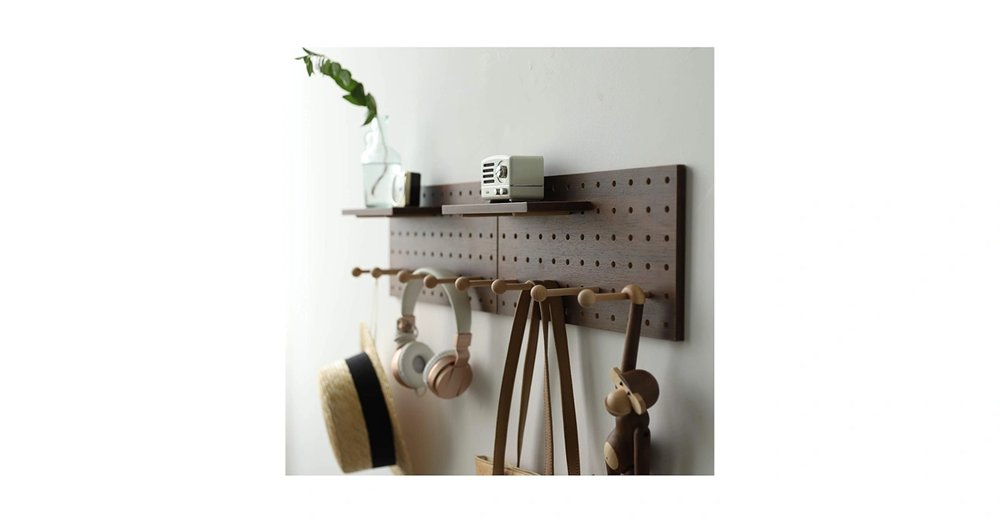
Retail space management has been revolutionized by modular display hook systems. These systems offer adaptable configurations that adjust to inventory changes. Stores can now show products better and spend less time maintaining displays.
Quick-swap hook systems for seasonal changes
Simple, straight-entry hook designs make it easy to add or remove items in packed displays and under shelves. Quick-swap hooks come in two pieces that snap together easily. Users just need to insert the backplate, add the wire, and click everything into place. Retailers can now change their displays to match different product sizes and quantities throughout the year without buying new equipment. The system works great during busy holiday seasons with maximum capacity and can be adjusted to create browsable displays in slower periods.
Reducing restocking time with ergonomic layouts
Display hooks boost efficiency in merchandise handling. The vertical merchandising approach saves valuable shelf and floor space while making products easier to reach. Staff members can move hooks around without disturbing nearby items thanks to fastback adapters – a vital feature during rush hours. This smart organization helps stores stock more items without needing extra space.
Case study: Display hooks for a shop with high SKU turnover
A major snack company used cardboard displays with hooks to launch their protein bar line. Their sales jumped 30% in just one month after they placed these hooks in strategic wall and checkout locations. A cosmetics company saw similar success when it used countertop displays with hooks for lip balms, which led to improved sales through better product visibility.
Conclusion
Display hooks are vital tools for any retail environment that needs to maximize space and boost product visibility. We’ve covered everything in these versatile fixtures that can reshape your store’s layout and your customers’ experience.
Your choice of display system – pegboard, slatwall, or gridwall – will affect how your customers shop. The right ergonomic placement will give your target audience easy access to products without any strain or frustration. When merchandise is arranged thoughtfully, customers notice and sales tend to increase.
You can customize display hooks to match your brand identity instead of using them just as functional items. The right colors, finishes, and maybe even custom shapes create a store atmosphere that strengthens your visual branding.
Modern retailers need flexible solutions, and modular hook systems deliver exactly that. Quick-swap mechanisms and adaptable setups let you respond fast to seasonal changes and inventory shifts. This approach streamlines restocking and keeps your store organized and shopper-friendly.
At first glance, display hooks might look like basic retail fixtures. But when you design them with ergonomics, brand consistency, and efficiency in mind, they become powerful tools that improve shopping experience and drive sales. Smart use of the strategies we’ve shared will help you build retail displays that look professional and work well for your staff and customers.
Key Takeaways
Effective display hook design combines strategic placement, ergonomic considerations, and brand alignment to create retail environments that boost sales and improve customer experience.
• Choose hook systems based on your needs: pegboard for affordability, slatwall for upscale appearance, gridwall for flexibility and mobility.
• Position hooks at optimal heights: 1.2-1.5 meters for adults, with slight forward angles to present products naturally toward customers.
• Customize hooks with brand colors and finishes to reinforce visual identity while adding functional elements like integrated price tag holders.
• Implement modular quick-swap systems to reduce restocking time by up to 30% and easily adapt displays for seasonal changes.
• Maintain proper spacing (3-6 inches between hooks) to prevent overcrowding, as 70% of shoppers abandon purchases due to disorganized displays.
When implemented correctly, ergonomic display hooks transform simple retail fixtures into powerful merchandising tools that enhance product visibility, streamline operations, and create intuitive shopping experiences that drive customer satisfaction and sales growth.
FAQs
Q1. What are the key elements of effective display hook design? Effective display hook design involves strategic placement, ergonomic considerations, and brand alignment. This includes choosing the right hook system, positioning hooks at optimal heights, customizing hooks to match brand identity, and implementing modular systems for easy adaptability.
Q2. How can I choose the right display hook system for my store? Select hook systems based on your specific needs. Pegboard is ideal for affordability, slatwall offers an upscale appearance, and gridwall provides flexibility and mobility. Consider factors like your store layout, product types, and desired esthetic when making your choice.
Q3. What’s the optimal height for placing display hooks? For adult shoppers, the ideal height is between 1.2-1.5 meters from the floor. However, this can vary depending on your target demographic. For women, aim for around 152 cm, for men about 165 cm, and for children approximately 122 cm.
Q4. How can I use display hooks to reinforce my brand identity? Customize your display hooks with brand colors and finishes to reinforce your visual identity. You can also add functional elements like integrated price tag holders. Some retailers even engrave or print logos directly onto the hooks for stronger brand presence.
Q5. How do modular hook systems improve store efficiency? Modular quick-swap systems can reduce restocking time by up to 30% and allow easy adaptation for seasonal changes. These systems enable swift transformation of displays to accommodate different product sizes, quantities, and merchandising strategies without investing in new fixtures.
